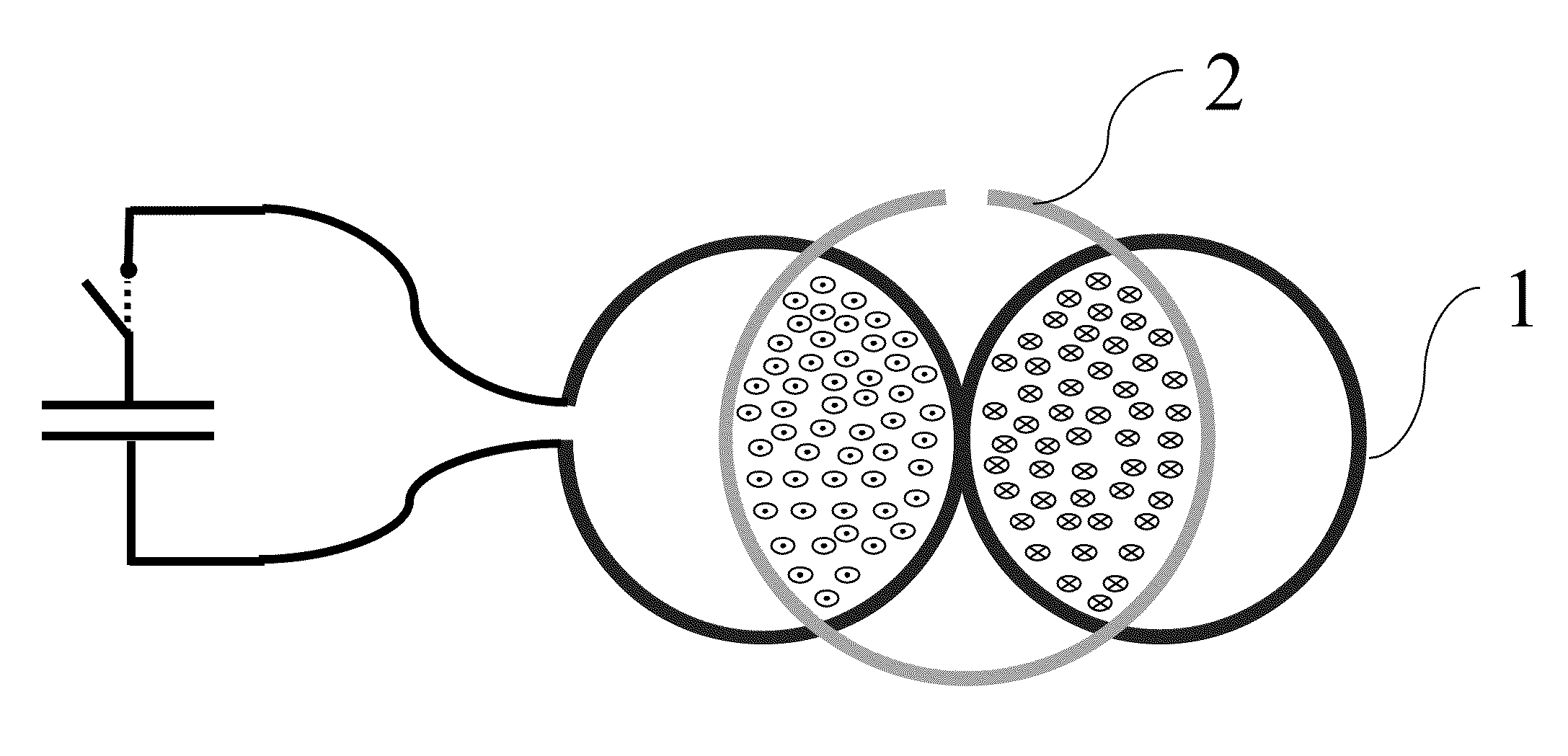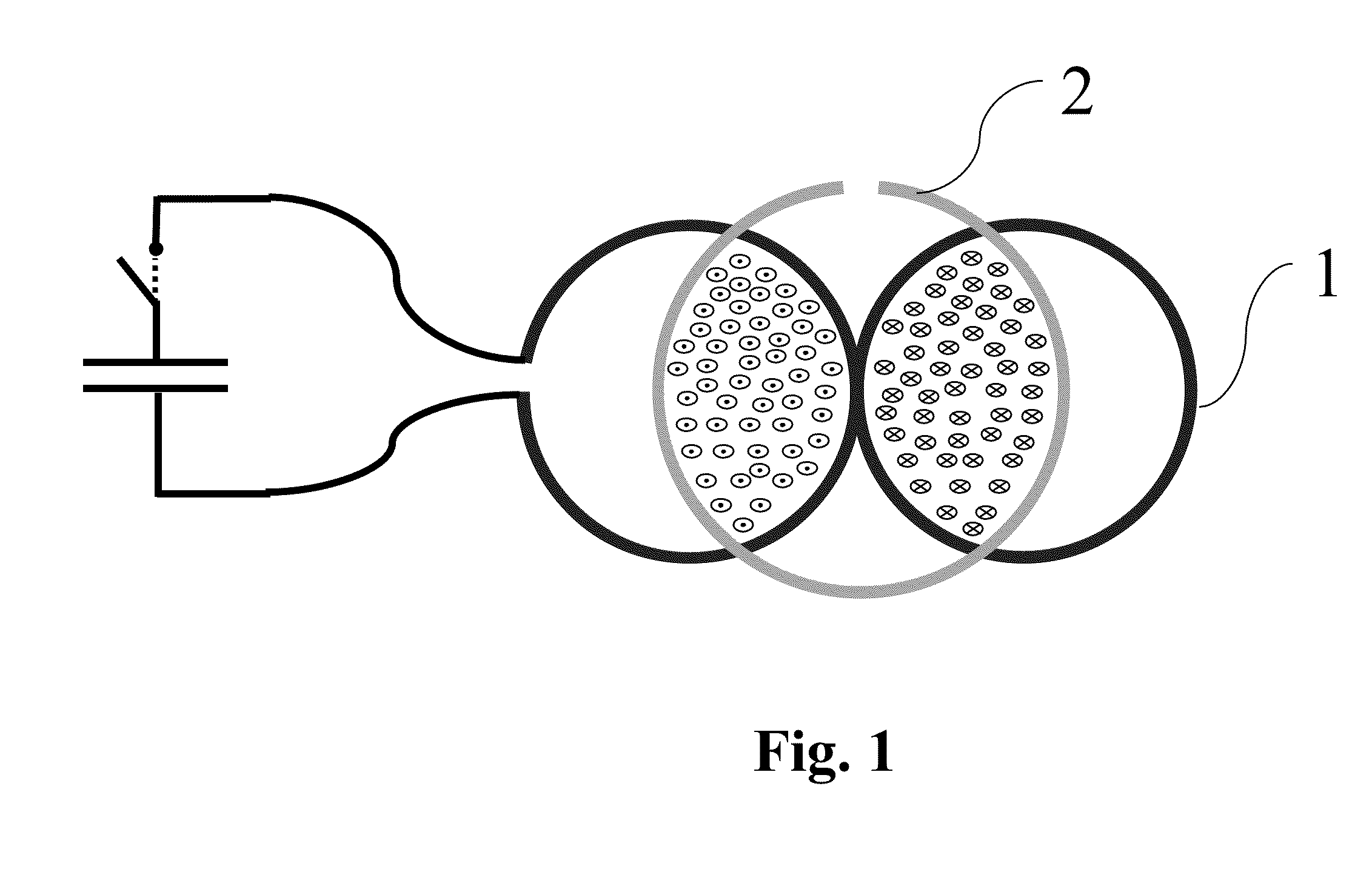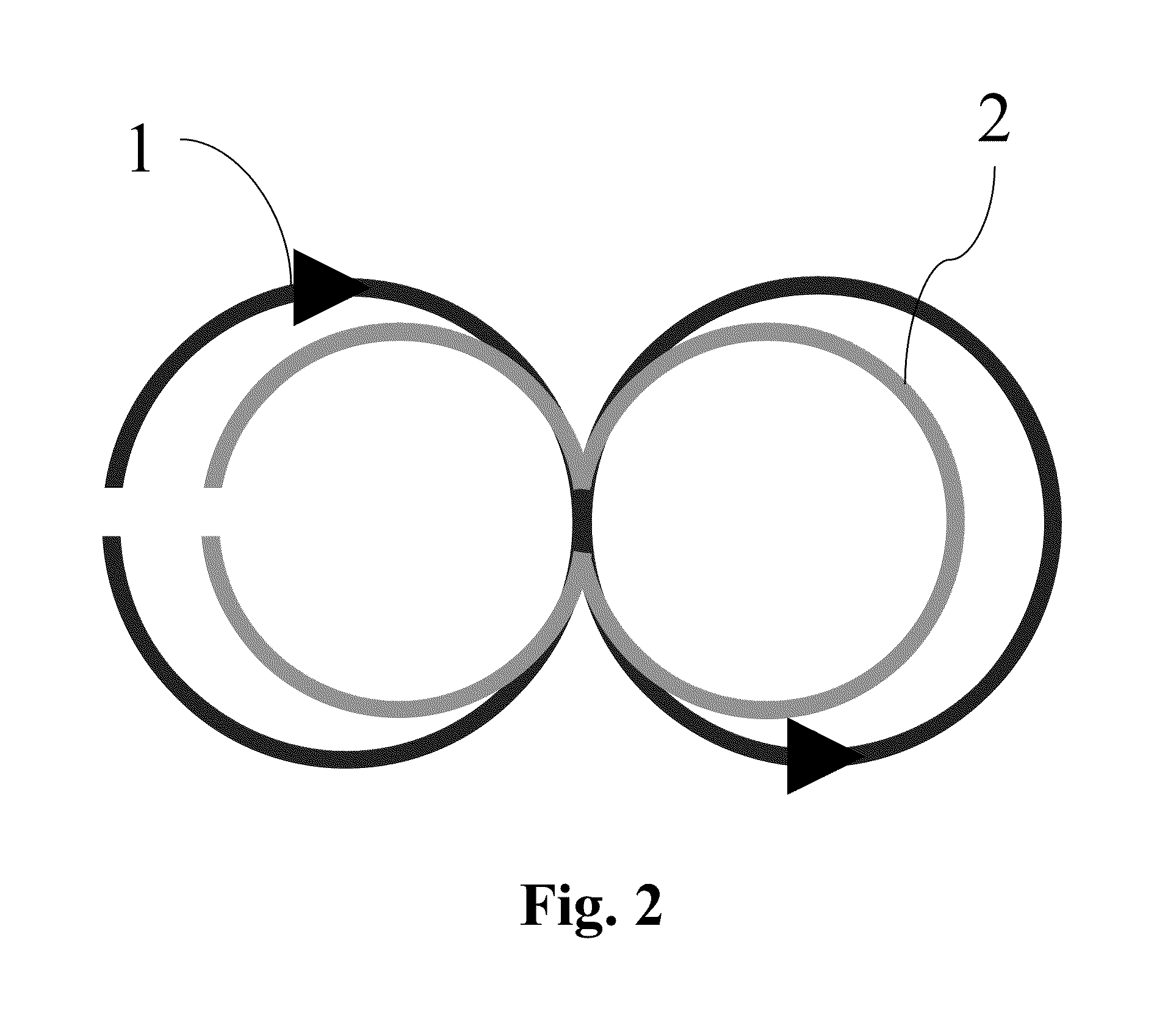Magnetic Stimulation coils with electrically conducting structures
a technology of electrical conductivity and magnetic stimulation coil, which is applied in the field of biological tissue stimulation, can solve the problems of discomfort for the patient and the operator of the coil, the disadvantages of conventional tms coils, and the inability to heat up very easily, so as to improve the rigidity of the coil structure, improve the comfort of users, and transfer heat
- Summary
- Abstract
- Description
- Claims
- Application Information
AI Technical Summary
Benefits of technology
Problems solved by technology
Method used
Image
Examples
Embodiment Construction
[0037]According to the present invention, it is possible to provide a magnetic stimulator coil with metallic cooling elements. The cooling constructions are chosen so that the copper windings of the TMS coil have minimal electromagnetic coupling with the electrically conducting cooling and supporting structures. This is achieved when the mutual inductance between the coil and the electrically conducting supporting / cooling piece / pieces is zero or close to zero.
[0038]In principle, the cooling structure can be manufactured of any electrically conducting and non-magnetic material having good thermal properties, i.e., its coefficient of thermal conductivity is high, preferably greater than 10 WK−1m−1, or its heat capacity is high, preferably greater than 1 Jcm−3K−1, or both. Therefore suitable materials for herein described applications include for example copper and silver. By electrically conducting material is meant a material having the electrical conductivity of at least 0.01 MS / m, ...
PUM
 Login to View More
Login to View More Abstract
Description
Claims
Application Information
 Login to View More
Login to View More - R&D
- Intellectual Property
- Life Sciences
- Materials
- Tech Scout
- Unparalleled Data Quality
- Higher Quality Content
- 60% Fewer Hallucinations
Browse by: Latest US Patents, China's latest patents, Technical Efficacy Thesaurus, Application Domain, Technology Topic, Popular Technical Reports.
© 2025 PatSnap. All rights reserved.Legal|Privacy policy|Modern Slavery Act Transparency Statement|Sitemap|About US| Contact US: help@patsnap.com



